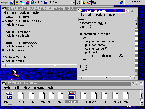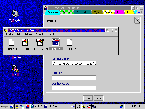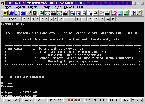| I was first
introduced to ZOC through a university colleague, while he was studying for his PhD at
UTS. An avid OS/2 user, he was so enthusiastic about ZOC that I just had to give it a try.
ZOC is an all-round multipurpose communication program that can be used to access BBSes
through modem or ISDN, Telnet hosts via a LAN or the Internet, and special character-based
services through named pipes. It's not often I get to write this, but ZOC is one of those
programs that has too many features to mention. ZOC is a true 32-bit multithreaded program
that is (thankfully) available for OS/2, Windows NT and Windows 95, so you can use it at
home and at work! ZOC can emulate TTY, VT52, VT100, VT102,
VT220, AVATAR, ANSI, and, through a third party, QNX terminals. Supported file transfer
protocols include ASCII, Xmodem, Ymodem, Zmodem, CompuServe-B, Kermit, and interrupted
Zmodem and CompuServe-B transfers can be resumed. The online help is nothing less than
extensive, with help for both intermediate and experienced OS/2 users. In case you're in
the habit of surfing for images, you can show GIF/JPEG pictures while downloading them
(you don't have to wait for them to download completely) and, if you're worried about your
ISP bill, there's telephone cost monitoring depending on daytime, weekends and holidays.
If you enjoy it, there's the ability to use REXX for scripting (yes, you can program in
REXX for OS/2, Windows NT and Windows 95 as well). If you want a communication server, ZOC
is happy with Dynamic Data Exchange, and there's support for external OS/2 protocols and
external DOS protocols under OS/2 and Windows. As well as all that, there's a phone book
with up to 500 entries (with a full option set for each), logging sessions to printer,
file and scrollback buffer (all very easy to use), clipboard support, a user defined
toolbar with over 60 functions, a status line with modem LEDS and quick access to
important options. ZOC is definitely the leader when it comes to OS/2 PM terminal
programs. |



